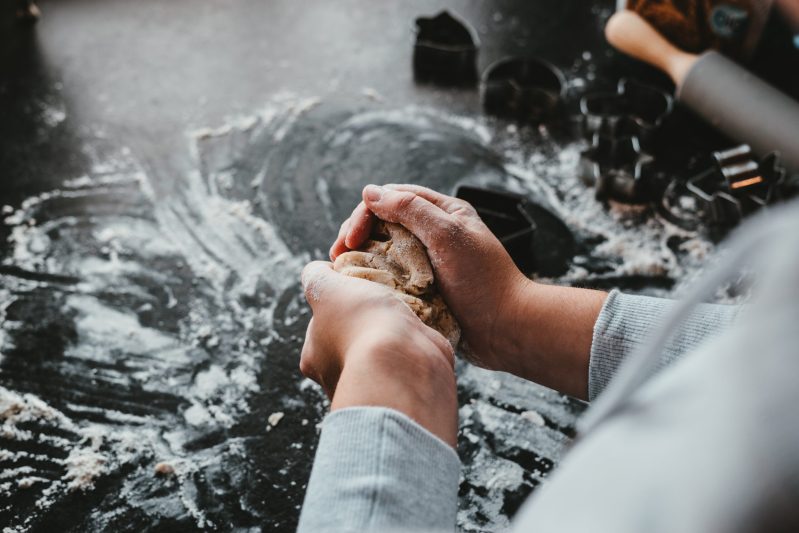Are domestic cooking skills in decline? Processed foods, Postmates, and being pressed for time have led to a decline in cooking among our heat-and-eat generation. Meal planning, food shopping, preparing, and cooking food used to be essential life skills, but so was sewing at one point.
Convenience foods such as ready meals and pre-chopped vegetables make it quick and easy to put a meal on the table. Why would you bother roasting a chicken when you can pick up a rotisserie chicken for under 10 bucks? With the farm-to-fork and slow food movements taking over healthier, fresher food is in demand.
More people are flexing their culinary muscles thanks to the advent of grocery delivery services such as Instacart; meal kit subscriptions like Blue Apron, which offer a paint-by-number style of home chefery; and oh, you know the Coronavirus limiting food service in restaurants. We also have more resources at our fingertips than ever, from Tiktok chefs to having Alexa keep track of our shopping list.
Today, we’re bringing it back to the basics and learning how to make some of those pre-prepared foods that we always reach for out of convenience from scratch. Read on to learn how to master homemade gravy, pie crust, stock, broth, and tomato sauce. Before we learn how to make some of the things we usually buy at the store, let’s talk about why it’s important to cultivate cooking skills.
The Importance of Cultivating Culinary Skills

Photo by Amber Maxwell Boydell on Unsplash
Eating at home means we consume less salt, sugar, fat, and calories than eating out. Science Daily says “Evidence suggests that developing cooking and food preparation skills is important for health and nutrition, yet the practice of home cooking is declining and now rarely taught in school. A new study found that developing cooking skills as a young adult may have long-term benefits for health and nutrition.” As you can see, it is vital that we pass these skills down to the next generation. Plus, there are plenty of benefits of cooking with children. Home cooking can also be seen as a form of self-care and “affects mental and physical health in an array of ways,” as Well+Good observes.
Homemade Gravy

freeimageslive.co.uk – freefoodphotos
Brown gravy is way easier to make than you may realize. It’s best with pan drippings, but it’s all gravy if you want to make it with stock instead. With pan drippings, all you have to do is add flour, salt, and pepper. Sans drippings, make gravy from scratch with a few cups of warm stock, a quarter cup of unsalted butter, half a teaspoon of both rosemary and thyme, and some salt and pepper. Impress your family with our timeless turkey gravy this Thanksgiving.
Stock

Image by Hans Braxmeier from Pixabay
Stock serves as a jumping-off point for homemade sauces, gravies, soups, and stews. Stock is similar to broth in that both contain bones and are made by simmering diced vegetables, aromatics, and bones in water. However, the ingredients, the cooking time, and the seasoning differentiate the two. Broth is seasoned, while stock is not. In stock, the bones are usually roasted to give it more flavor. Stock takes forever—anywhere from two to six hours—but an Instapot can speed things up. Here are our recipes for beef stock and vegetable stock.
Broth

Image by Eak K. from Pixabay
Ramen made with water vs. Ramen made with chicken broth is like night and day. Ramen made with real chicken broth vs. the boxed or canned stuff = priceless.
Pie Crust

Photo by Debby Hudson on Unsplash
If you’re used to frozen, a flakey, buttery homemade pie crust will take your pies and quiches to the next level. All you need as far as ingredients go is flour, sugar, salt, butter, and water. Tools-wise, pie crust requires a food processor, rolling pin, a nine-inch pie dish, and some pie weights. No food processor? Cut wet ingredients into the dry ones by hand with a pastry cutter. Pie weights are required to prevent the dough from puffing up during pre-baking, aka “blind baking,” but dry beans or rice parchment paper will also do the trick.
One thing to keep in mind is that the dough has to be refrigerated for at least an hour before you can roll it out. However, it does keep in the fridge for a few days, so you can make it ahead of time, or even freeze it up to three months and then let it thaw completely before rolling it out.
Spaghetti Sauce

Image by joshuemd from Pixabay
Did you know that spaghetti sauce is basically tomato sauce and herbs? We reach for sugar-packed storebought sauces because the slow-simmering nature of the beast requires low-and-slow cooking time many of us just don’t have. Again, this is where the Instant Pot or slow cooker comes in handy. However, if you do happen to set aside an afternoon to make a batch of sauce, here are our favorite homemade spaghetti sauce recipes. And here’s how to make sure you end up with the consistency you desire.
